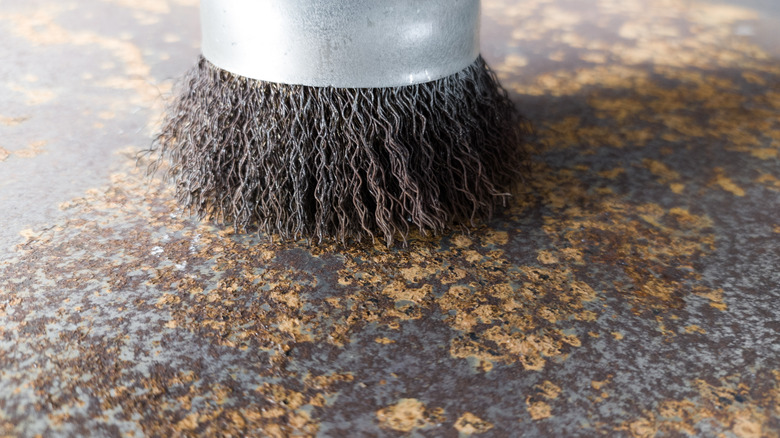We may receive a commission on purchases made from links.
Automatic drip coffee makers are the unsung heroes of any busy kitchen. Morning after morning, they rev up their engines, boil water, and produce a waterfall of coffee that makes any 7 a.m. wake-up call worthwhile. But like all kitchen appliances, coffee machines wear out over time. One of the first and fastest parts of the machine to deteriorate is the hot plate, which keeps your pot of coffee warm after it’s brewed. Coffee hot plates are often made of materials that rust after long-term exposure to liquid. Heat also expedites the development of rust, leading to a corroded hot plate with reduced efficiency and aesthetic appeal. Luckily, there are some home remedies for removing rust from a coffee machine hot plate.
Mixing a paste of baking soda and water, and letting it marinate on top of a rusted hot plate allows it to cling to the corrosion, making it easier to scrub away with steel wool, a wire brush, or a scouring pad. For mild rust stains, salt combined with a generous squeeze of lemon juice can be effective, especially when scrubbed with the rind or a similar abrasive. If the hot plate is removable, soaking it in vinegar may loosen buildup with minimal elbow grease. You can always combine methods by soaking in vinegar and repeating the previously-mentioned techniques using baking soda or lemon and salt.
Beyond these natural cleaners, commercial rust removal sprays like the Rust-Oleum Rust Dissolver Gel Formula Spray work well too. In more severe cases, sanding may be the best option. But be warned, sanding can take some extensive effort, so consider using an electric sander if you have one available. If the rust removal process strips the original coating, repainting the hot plate with a heat-resistant paint like Rust-Oleum’s high heat spray paint helps restore both function and appearance.
How to prevent a rusty coffee maker hot plate
The best way to fix a rusty coffee machine hot plate is by preventing the development of rust altogether. Keep a few simple maintenance tips in mind to keep your miracle-working coffee machine looking and running like new.
After each use, wipe down the hot plate to remove any moisture or residual coffee drips. Even small amounts of liquid left behind can contribute to rusting, so keeping the plate dry is the most essential preventative measure. When removing the coffee carafe, place a small container or cloth underneath the drip area to catch any water or coffee that might spill or drip onto the hot plate.
Regularly cleaning the hot plate helps prevent water spots, coffee stains, and other debris from building up and accelerating corrosion. Avoid washing the hot plate with detergents, as they may contain harsh acids that facilitate rusting. Instead, clean your coffee maker’s hot plate with baking soda or vinegar. It’s also important to store your coffee maker in a dry, well-ventilated area to keep humidity from settling atop the hot plate.
A drip coffee machine is a must-have kitchen countertop appliance, but maintenance and routine upkeep are essential for ensuring its longevity. Take preventative measures to reduce the incidence of rusting and act quickly when it develops.






